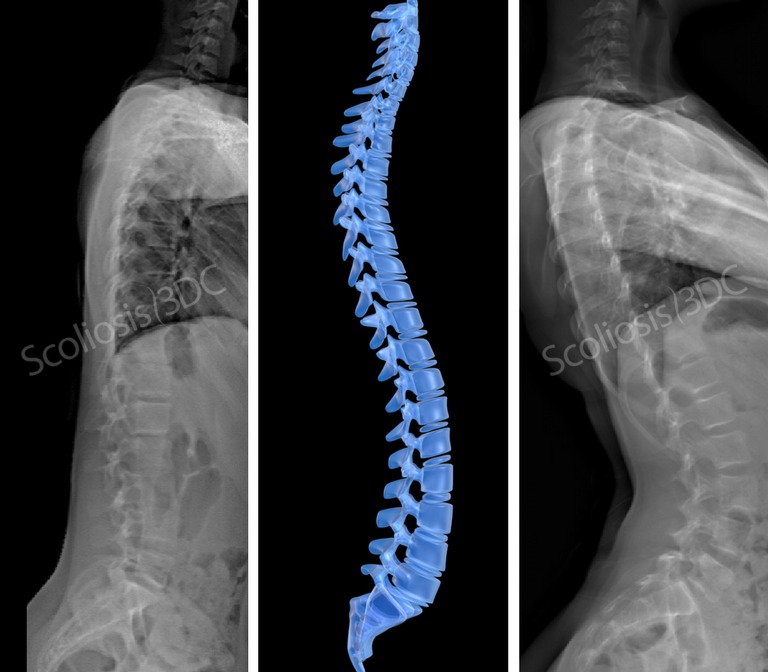Research on bracing has demonstrated the importance of addressing the sagittal plane of scoliosis during bracing (1). Flattening of the physiologic curves of the sagittal plane is now thought to be an early indicator of adolescent idiopathic scoliosis (3,4).
At Scoliosis 3DC® we address the sagittal plane of scoliosis in two ways. First, exercises to address the sagittal plane of scoliosis are a component of our individualized programs. These specific exercises are relatively fast and easy to perform AND can make a meaningful difference (2). Secondly, a well-designed Chêneau style bracing addresses scoliosis in all three planes, including the sagittal plane, and works to remodel the spine for a more natural sagittal profile (middle image below).
As shown in the left image below, patients with scoliosis usually present with an atypical sagittal plane, often with a loss of thoracic kyphosis (flattening of the normal rounded curve in the upper back, or hypokyphosis) and a loss of lumbar lordosis (straightening of the normal arch in the lower back, or hypolordosis). Sometimes, scoliosis patients can present with hyperlordosis (excessive arch of the lower back) as shown in the right image below. At Scoliosis 3DC® we take the unique physiology of each patient into account when instructing. Our team teaches specific exercises that best address a patient’s unique curves, in all three of the planes of scoliosis. Three-dimensional correction, that’s what 3DC stands for! For the sagittal plane, the goal is for the patient to learn what needs to be done to be able to work toward establishing a normal range of lumbar lordosis and thoracic kyphosis.

Middle: Normal sagittal profile.
Right: Scoliosis patient presenting with excessive arching of the lower back (hyperlordosis).
For patients with kyphoscoliosis, kyphosis, or Scheuermann’s disease, exercises are modified to address the associated hyperkyphosis (excessive rounding of the upper back). Depending on your case, we may be able to offer a bracing alternative that may help with kyphosis too.
(1) van Loon PJ, Kühbauch BA, Thunnissen FB. Forced lordosis on the thoracolumbar junction can correct coronal plane deformity in adolescents with double major curve pattern idiopathic scoliosis. Spine. 2008 Apr 1;33(7):797–801.
(2) Weiss HR, R Klein. Improving excellence in scoliosis rehabilitation: a controlled study of matched pairs. Pediatr Rehabil 9:3.190-200 Jul/Sep 2006.

